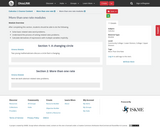
After completing this section, students should be able to do the following.Solve basic related rates word problems.Understand the process of solving related rates problems.Calculate derivatives of expressions with multiple variables implicitly.

After completing this section, students should be able to do the following.Solve basic related rates word problems.Understand the process of solving related rates problems.Calculate derivatives of expressions with multiple variables implicitly.
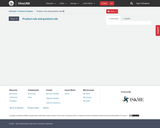
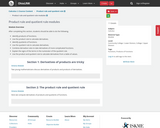
After completing this section, students should be able to do the following.Identify products of functions.Use the product rule to calculate derivatives.Identify quotients of functions.Use the quotient rule to calculate derivatives.Combine derivative rules to take derivatives of more complicated functions.Explain the signs of the terms in the numerator of the quotient rule.Use the product and quotient rule to calculate derivatives from a table of values.
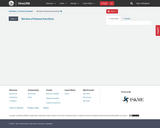
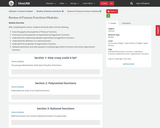
After completing this section, students should be able to do the following.Know the graphs and properties of ‘‘famous’’ functions.Know and use the properties of exponential and logarithmic functions.Understand the relationship between exponential and logarithmic functions.Understand the definition of a rational function.Understand the properties of trigonometric functions.Evaluate expressions and solve equations involving trigonometric functions and inverse trigonometric functions.
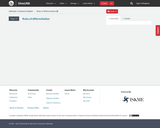
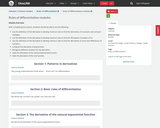
After completing this section, students should be able to do the following.Use the definition of the derivative to develop shortcut rules to find the derivatives of constants and constant multiples.Use the definition of the derivative to develop shortcut rules to find the derivatives of powers of xx.Use the definition of the derivative to develop shortcut rules to find the derivatives of sums and differences of functions.Compute the derivative of polynomials.Recognize different notation for the derivative.State the derivative of the natural exponential function.State the derivative of the sine function.
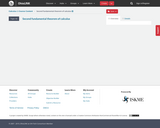

After completing this section, students should be able to do the following.State the Second Fundamental Theorem of Calculus.Evaluate definite integrals using the Second Fundamental Theorem of Calculus.Understand how the area under a curve is related to the antiderivative.Understand the relationship between indefinite and definite integrals.
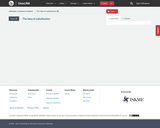
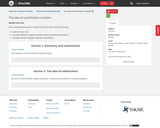
After completing this section, students should be able to do the following.Undo the chain rule.Calculate indefinite integrals (antiderivatives) using basic substitution.Calculate definite integrals using basic substitution.
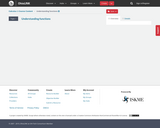
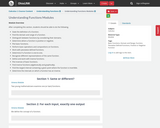
After completing this section, students should be able to do the following.State the definition of a function.Find the domain and range of a function.Distinguish between functions by considering their domains.Determine where a function is positive or negative.Plot basic functions.Perform basic operations and compositions on functions.Work with piecewise defined functions.Determine if a function is one-to-one.Recognize different representations of the same function.Define and work with inverse functions.Plot inverses of basic functions.Find inverse functions (algebraically and graphically).Find the largest interval containing a given point where the function is invertible.Determine the intervals on which a function has an inverse.
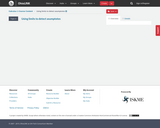
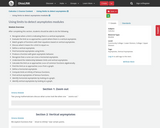
After completing this section, students should be able to do the following.Recognize when a limit is indicating there is a vertical asymptote.Evaluate the limit as xx approaches a point where there is a vertical asymptote.Match graphs of functions with their equations based on vertical asymptotes.Discuss what it means for a limit to equal ∞∞.Define a vertical asymptote.Find horizontal asymptotes using limits.Produce a function with given asymptotic behavior.Recognize that a curve can cross a horizontal asymptote.Understand the relationship between limits and vertical asymptotes.Calculate the limit as xx approaches ±∞±∞ of common functions algebraically.Find the limit as xx approaches ±∞±∞ from a graph.Define a horizontal asymptote.Compute limits at infinity of famous functions.Find vertical asymptotes of famous functions.Identify horizontal asymptotes by looking at a graph.Identify vertical asymptotes by looking at a graph.
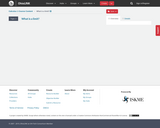
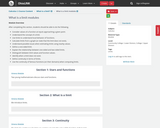
After completing this section, students should be able to do the following.Consider values of a function at inputs approaching a given point.Understand the concept of a limit.Use limits to understand local behavior of functions.Calculate limits from a graph (or state that the limit does not exist).Understand possible issues when estimating limits using nearby values.Define a one-sided limit.Explain the relationship between one-sided and two-sided limits.Distinguish between limit values and function values.Identify when a limit does not exist.Define continuity in terms of limits.Use the continuity of famous functions (on their domains) when computing limits.

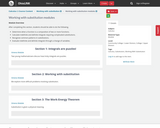
After completing this section, students should be able to do the following.Determine when a function is a composition of two or more functions.Calculate indefinite and definite integrals requiring complicated substitutions.Recognize common patterns in substitutions.Evaluate indefinite and definite integrals through a change of variables.

Complete course available at MyOpenMath. Course ID: 144813 With the use of the Openstax Calculus 2 textbook. This work is a part of the growing collection of openly licensed course content that was revised, remixed or created by Owens faculty and staff. This course is specifically for the course MTH 232 at Owens. Owens Community College Contributors: Sarah Long.